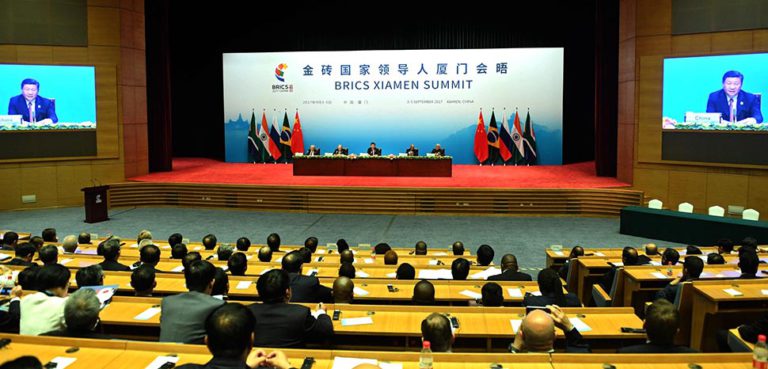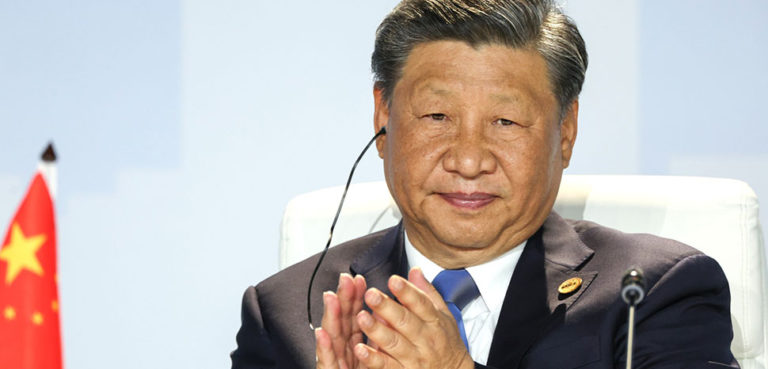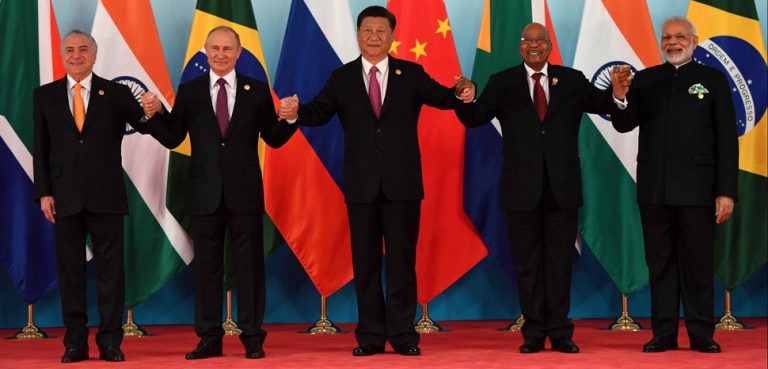The recently concluded BRICS Kazan Summit, the bloc’s 16th so far, emerged as a moment of both opportunity and uncertainty for a bloc in transition. Under the banner of “Strengthening Multilateralism for Just Global Development and Security,” BRICS leaders projected unity and ambition, seeking to position the bloc as a counterweight to Western-dominated global governance. The inclusion of new partners, proposals for alternative financial systems, and calls for reforming global institutions underscored BRICS’ desire to play a more significant role on the world stage. Yet, the summit also revealed the inherent challenges of managing a coalition characterized by diverse political systems, economic structures, and regional interests.
What began as an economic forum has evolved into a broad coalition, with ambitions that encompass political, security, and cultural dimensions. This evolution, showcased at the Kazan Summit, raises critical questions about BRICS’ future: Can the bloc maintain cohesion amid its diversity? And is it capable of championing a truly inclusive global order, or are its internal contradictions too deep to reconcile? This analysis will explore the main outcomes of the summit, focusing on its implications for economic, political, and security cooperation, while assessing the roles of key members like Russia, China, and India.
The Evolution of BRICS: From Economic Alliance to Political Bloc
The BRICS journey from an economic grouping to a geopolitical force began in 2001 when economist Jim O’Neill identified Brazil, Russia, India, and China as rising powers set to reshape the global economy. South Africa’s inclusion in 2010 broadened the coalition’s geographic and strategic reach, bringing an African perspective to what was already a diverse forum. Initially, BRICS focused on economic growth, trade, and reforming Western-led institutions like the International Monetary Fund (IMF) and the World Bank. However, as global power dynamics shifted, BRICS expanded its scope to include political and security issues, reflecting a desire to shape global norms and institutions.
The Kazan Summit represents a culmination of this broader agenda. Discussions covered everything from economic initiatives aimed at reducing dependence on Western financial systems to efforts at strengthening security and political cooperation among members. Yet, this expanded focus has come with challenges. The interests of the bloc’s members—China’s assertive foreign policy, India’s balanced geopolitical stance, and Russia’s adversarial posture towards the West—are not always aligned. These differences were evident at Kazan, where the summit’s ambitious rhetoric contrasted with the realities of internal divisions.
Key Developments from the BRICS Kazan Summit
The Kazan Declaration: Ambitious Yet Ambiguous
The centrepiece of the 2024 summit was the adoption of the Kazan Declaration, which reaffirmed BRICS’ commitment to a more equitable global order. The Declaration emphasized the need to reform global governance institutions, including the United Nations Security Council, to better represent the Global South. Additionally, it called for a revamped international financial architecture less dependent on Western systems. This aligns with BRICS’ broader critique of Western-centric international institutions.
However, the Kazan Declaration can be criticized for its lack of specificity. While the document projected ambitious goals, it failed to outline clear mechanisms or timelines for achieving them. This ambiguity is likely a reflection of the bloc’s internal diversity—an attempt to accommodate differing national priorities without alienating key members. Yet, the absence of actionable steps risks reducing the Declaration to a symbolic gesture rather than a concrete roadmap for change.
Economic Agenda: De-Dollarization and New Financial Initiatives
Economic independence from the West was a central theme at Kazan, with particular emphasis on reducing reliance on the US dollar. Russian President Vladimir Putin proposed the creation of a BRICS grain exchange to stabilize food prices and enhance food security within the bloc, while the much-anticipated BRICS Pay system—a blockchain-based platform for cross-border transactions using national currencies—was a focal point. These initiatives aim to challenge Western financial dominance and provide BRICS members with greater economic autonomy.
However, creating a credible alternative to established financial systems presents substantial challenges. The technical complexities of a blockchain-based payment system, combined with varying regulatory standards among BRICS members, complicate the development of a unified financial network. India’s cautious approach to de-dollarization, influenced by its significant economic ties to Western nations, illustrates the difficulties in forming a cohesive economic strategy within BRICS.
Political and Security Cooperation: Balancing Divergent Interests
The Kazan Summit underscored BRICS’ interest in political and security cooperation, with Russia and China leading calls for a more multipolar world order. Both nations used the summit to emphasize their strategic partnership, presenting it as a model for non-Western cooperation. Yet, India’s diplomatic caution was evident throughout the discussions, reflecting its reluctance to fully align with an anti-Western agenda that could jeopardize its partnerships with the United States and Europe. This ambivalence was mirrored in the summit’s decision to avoid direct references to contentious topics, such as Ukraine war, which threatened to exacerbate existing divisions within the bloc.
The Role of Key Members: Russia, China, and India
Russia: A Drive for Global Relevance
Russia’s leadership in hosting the 2024 summit underscored its determination to use BRICS as a platform to counter Western influence, especially in the wake of ongoing sanctions and geopolitical isolation. President Putin’s proposals for a BRICS grain exchange and the creation of alternative financial systems reflect Russia’s long-standing goal of reducing dependence on Western markets and asserting economic sovereignty. Moscow’s alignment with Beijing on issues of financial independence and multipolarity was a defining feature of the summit. However, Russia’s assertive stance risks alienating members like India, which are wary of entanglements that could compromise their broader geopolitical strategies.
China: An Assertive Player with a Strategic Vision
China’s participation at Kazan highlighted its ambitions to reshape the international financial architecture and reduce Western economic influence. President Xi Jinping’s endorsement of the BRICS Pay system and calls for financial diversification align with China’s broader strategy of asserting leadership in global governance. However, Beijing’s assertiveness—coupled with its growing economic clout—poses its own challenges for BRICS cohesion. Smaller members may feel overshadowed by China’s dominant role, while India’s geopolitical concerns about Chinese influence add another layer of complexity to the bloc’s internal dynamics.
India: The Cautious Mediator
India’s stance at the Kazan Summit was characterized by diplomatic caution. While New Delhi supports BRICS’ calls for a more equitable global order, it is careful not to sever ties with Western allies. India’s cautious approach to de-dollarization reflects its need to balance economic partnerships with both the West and the Global South. At the same time, India’s geopolitical tensions with China—particularly over border disputes and regional influence—contribute to the difficulties in forging a unified BRICS strategy. Prime Minister Narendra Modi’s emphasis on economic cooperation rather than geopolitical alignment illustrates India’s desire to maintain flexibility within a complex global landscape.
BRICS Expansion: Opportunity or Overreach?
The decision to welcome 13 new partner nations at Kazan has the potential to redefine BRICS’ global role, but it also introduces challenges. The inclusion of countries as diverse as Algeria, Türkiye, and Iran reflects BRICS’ ambition to represent a broader segment of the Global South. Yet, this diversity may exacerbate internal divisions, particularly as new members bring their own geopolitics and rivalries.
Türkiye’s participation as a partner, despite being a NATO member, exemplifies the geopolitical balancing act that BRICS must perform. It reflects the bloc’s willingness to engage countries with complex alliances, but also underscores the difficulty of maintaining a consistent strategic direction.
Iran’s full membership aligns with BRICS’ anti-Western rhetoric, yet it introduces tensions with potential future members like Saudi Arabia. While Saudi Arabia was previously invited to join BRICS and attended as an observer, it did not take the step of full membership at Kazan—a decision that underscores the delicate balance BRICS faces in managing Middle Eastern rivalries. Saudi Arabia’s hesitation highlights the uncertainties around BRICS’ geopolitical alignment, particularly as the bloc seeks to expand without alienating key regional players.
Similarly, Argentina’s withdrawal from its bid for BRICS membership, despite its initial enthusiasm, points to the challenges of sustaining long-term commitment from potential members. Argentina’s decision to step back was reportedly influenced by domestic economic pressures and concerns about aligning too closely with a bloc that remains so ideologically diverse. This hesitation underscores the complex considerations that countries must weigh when contemplating BRICS membership.
These developments illustrate the central tension of BRICS expansion: balancing inclusivity with coherence. As the bloc grows, its consensus-based decision-making model—designed to accommodate a range of interests—risks becoming increasingly unwieldy. Managing this diversity without undermining BRICS’ effectiveness remains a formidable challenge, raising critical questions about whether the bloc can function as a cohesive entity in a fragmented geopolitical landscape.
Can BRICS Fulfill Its Ambitions?
The 2024 Kazan Summit was a moment of both promise and peril for BRICS. The bloc’s efforts to present a unified front and challenge Western hegemony were evident in its ambitious economic initiatives, calls for global governance reform, and the inclusion of new partners. Yet, the summit also highlighted the deep-seated challenges of managing a coalition characterized by diverse interests and complex geopolitical relationships.
For BRICS to fulfill its aspirations, it must find ways to reconcile these differences while maintaining a clear and consistent strategic vision. The bloc’s future hinges on its ability to transform broad declarations into concrete actions and to navigate the delicate balance between expanding influence and preserving unity. If BRICS can overcome these internal contradictions, it may emerge as a significant player in a multipolar world. If not, it risks becoming a fragmented coalition with limited impact—a forum of convenience rather than a transformative force in global politics.




